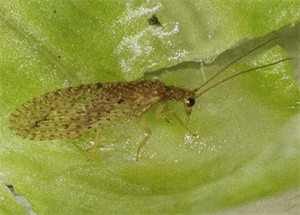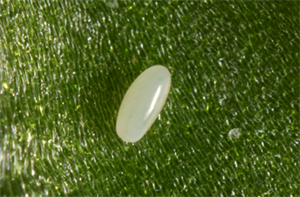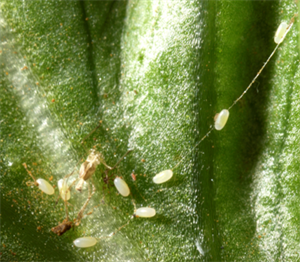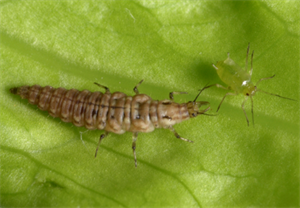- Worldwide. Recorded widely in Pacific islands. Adults and larvae prey on aphids, but also scales, mealybugs, thrips, psyllids, whiteflies, and other small insects, and mites.
- Adults light to dark brown, wings tent-like over body, long antennae and large eyes. Larvae up to 10 mm long, slender, flattened, with pincers. Adults hold and chew their prey; larvae hold, pierce and suck out contents of prey using pincer-like mouth parts after injecting venom (pincers are hollow). Both can eat up to 25 aphids a day.
- Eggs laid singly or in batches (not on stalks) on undersides of leaves, especially where odours of aphids (or other insects) detected. For instance, if aphids detected in centre of lettuce, females lay eggs on outer leaves so prey is available when eggs hatch.
- Management: in Australia and New Zealand, Tasmanian brown lacewing reared as a biocontrol of greenhouse pests. Note, lacewings very susceptible to broad-spectrum pesticides (e.g., chlorpyrifos, most neonicotinoids, pyrethroids).








